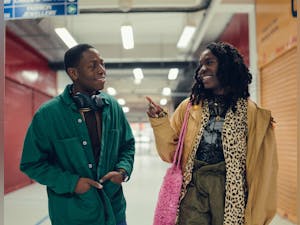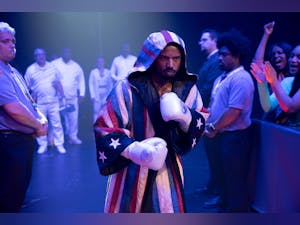From: Silver Screen
The Mother Tongue Film Festival preserves languages and culture from native communities through entertainment
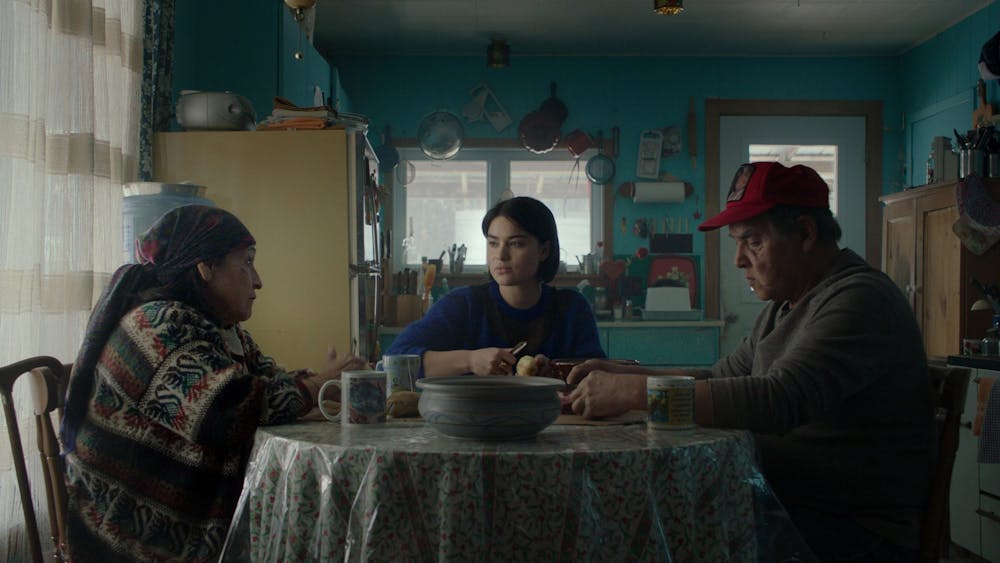
From Feb. 17 to March 4, the Smithsonian’s Mother Tongue Film Festival celebrated cultural and linguistic diversity by debuting documentaries, round table discussions and feature films that emphasize filmmakers and storytelling from around the world.
This year’s theme was “I Ka Wā Ma Mua, I Ka Wā Ma Hope,” which translates to “Through the Past is the Future.” Appreciating songs, legacies and the survival of native ancestors, Mother Tongue highlighted the persevering voices of historically marginalized communities and served to remind viewers of the integral part language plays in our lives.
Premiere
By Audrey Barnett
The festival commenced with opening remarks from Smithsonian organizers. This year’s theme was highlighted in the 36 films being shown throughout the two weeks of programming. The great diversity of different languages present in the screenings proved how foundational language is to connecting the past with the future.
The festival’s first screening marked the U.S. premiere of Quebec filmmaker Caroline Monnet’s debut feature film “Bootlegger” alongside the world premiere of “Ixim Ulew,” the latest music video from Maya hip-hop artist Tz’utu Kan. “Bootlegger” centers on the life of Manu, a Masters student who returns to the Algonquin reservation she grew up on in Northern Quebec. Manu is a character torn between past and present, representative of the festival’s yearly theme.
Manu’s arrival home is tense. Some people in the community feel that all she does is come, take and leave without contributing back. Manu finds herself in the middle of a community determining the best path to independence in which prohibition is central, as the Canadian government has tried for decades to control the sale of alcohol on reservations. The film is gorgeously shot, showcasing both the beauty and austere nature of the rural Quebec landscape contrasted against a haunting soundtrack that permeates the film.
“Bootlegger” made for an impactful start to the festival due to its themes of sovereignty, a community divided, young versus old, a diminished language and interference from colonial governments. All of which are themes that were grappled with heavily in the ensuing two weeks of the festival.
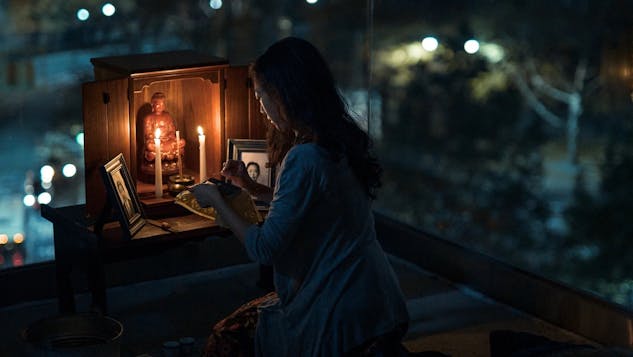
Legacy of Yanomamö
By Audrey Barnett
As part of the Mother Tongue Festival’s programming, the Smithsonian hosted a series of roundtables on key topics of discussion within Indigenous filmmaking, highlighting the voices of experts in the field.
One roundtable moderated by Alice Apley, a representative from Documentary Educational Resources, discussed the preservation of the Yanomamö films and a more critical look at anthropology. The Yanomamö film series, a collaboration between anthropologist Napoleon Chagnon and filmmaker Timothy Asch, centers on the Yanomamö: an Indigenous community that resides in southern Venezuela and northern Brazil near the Orinoco and Mavaca Rivers.
Between 1968 and 1971, Chagnon and Asch shot approximately 50 hours of film on the Yanomamö. They dove into the different social and cultural lives of the Yanomamö people, capturing both everyday activities and folkloric performances. These films serve as a valuable educational tool and provide a solid foundation for anthropologists interested in studying this region.
The first part of the roundtable focused solely on the restoration the DER undertook when they received a grant from the National Film Preservation Foundation to remaster nine of the 21 films in the Yanomamö Series. Frank Aveni, one of the featured panelists, showed before and after versions of the film and the color corrected scans for the new restorations. The viewer gets to see excerpts from “A Man and His Wife Make a Hammock,” “Climbing the Peach Palm” and “A Father Washes His Children.” The updated versions include brighter colors and clearer optics.
The second part of the roundtable attempted to tackle what a redress for the colonial legacy of these films could look like, and if there were opportunities for indigenizing these films. Different Venezuelan anthropologists who have worked with the Yanomamö people weighed in.
Many of the anthropologists felt that the self-critical approach of Asch and Chagnon was appropriate. Asch sought out the Yanomamö perspective and asked them what he did right and what he did wrong. Indigenous filmmaker David Good believes that Asch’s films provide a helpful blueprint for future directing and an educational tool for Yanomamö people. Good and others look to a future full of Yanomamö filmmakers and directors as an increasing number of Yanomamö become more politically and economically engaged with Venezuela.
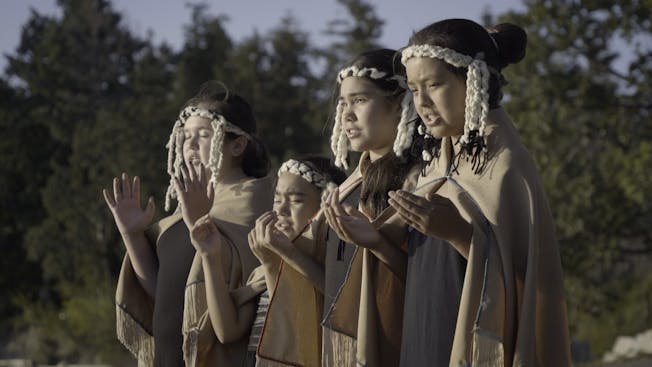
Representation in film: Director’s roundtable
By Hannah Langenfeld
A one-hour roundtable discussion led by Kālewa Correa, curator of Hawai’i and the Pacific at the Smithsonian Asian Pacific American Center, addressed the difficulty of mainstream Hollywood’s attitude to Pacific Islander inclusion with filmmakers Conrad Lihilihi and Hinaleimoana Kwai Kong Wong-Kalu.
Both filmmakers agreed that the purpose of “I Ka Wā Ma Mua, I Ka Wā Ma Hope” was to share the duality of worldviews of the contemporary and the past:
“To know the journey ahead I have to know what my parents, grandparents and great grandparents experienced before and utilize this knowledge to inform and guide me,” Wong-Kalu said. There is great emphasis on filmmaking as storytelling and the responsibility of creators to have purpose in their choices.
Building off this sentiment, Lihilihi called out the trend in recent Hollywood and society of trying to appear diverse for the sake of political correctness without actually uplifting voices or giving opportunities to underrepresented groups. The roundtable also examined reclaiming stories from those who are ancestrally connected and bringing attention to native languages, emphasizing the nefarious monetary gain from exploiting these experiences.
They also discussed ending cultural erasure by the white majority and promoting survival in the context of Pacific Islander representation of film, culminating in a conversation about embracing connection and all aspects of one’s identity regardless of the level of personal interrelation or language comprehension.
Toward the end of the event, Correa asked, “What is the best part of being a storyteller?”
“Not only do I control the narrative, but I also draw the picture,” Wong-Kalu said.
Centering women’s voices
By Hannah Langenfeld
This program celebrated stories and films written by and focusing on women and their impact on others' lives. The festival featured six individual short films, each with a uniquely dynamic journey expressed through native languages and pure emotion conveyed through the physicality of the actors.
One highlight from the program was ”Mother Tongue,” directed by Eris Qian, which focuses on second-generation Chinese American Lisa as she tries in vain to reconnect with her mother despite the language barrier between them. Her mother has forgotten how to speak English as a result of Alzheimer's disease, and Lisa cannot communicate with her anymore. The intense emotional bond between the two women is prevalent, particularly as the audience learns that Lisa is becoming a mother too.
Lisa goes on a journey and realizes a fundamental part of herself has been missing: intimacy with her culture and language. This proves to be heartbreaking and frustrating for Lisa because of her inability to verbally support her mother during her last days. Skillful acting and raw emotion fully immerses the audience in a story of sadness, sympathy, resentment and moving forward stronger than before.
Another short film, “Chi’ Kaan/Snake’s Mouth (Boca de Culebra),” directed by Adriana Otero Puerto, follows the internal struggle of Geli, a woman who considers leaving her native community of Chicán as she lives in southern Yucatán; Geli must reconcile with breaking family tradition and what will be viewed as turning her back on her community when she wishes to study in the city. Mayan and Mayan Sign Language are used by the family to converse, bringing attention to the ancestry of the community. The audience hears and reads the story from Geli’s point of view, particularly when she explains the discrimination faced because of her deafness. The painful process of breaking ties with the one place that understands her is etched into the script and facial expressions of every character who must reconcile with abandonment and separation.
Other films included “A Lua Nunca Morre (The Moon Never Dies),” directed by Mariona Lloreta, which tackles the complexities of a single father having to raise his son alone and destigmatized the idea of a single-parent household. “Humedal,” directed by Nitzia Ruiz Zapatero, centered on Lesvia Essesarte who writes a song raising awareness about how we must protect the environment, specifically the marine life in mangroves in Oaxaca, Mexico. It was written in her language of Ombeayiüts from San Mateo Del Mar.
Closing Night
By Kylie Bill
The final screening of the film festival featured a preview of director Wong-Kalu’s feature film “The Healer Stones of Kapaemahu.” The film transported the audience to the famous Waikiki beach in Honolulu, Hawaii where four boulders stand tall representing the four mahu — dual male and female spirits. Wong-Kalu identifies as a Native Hawaiian mahu and she seeks to preserve Native Hawaiian culture and language through her film and career.
Using vivid animation and imagery of the four boulders, the film takes the audience through the history of the colonization of Native Hawaiian culture and how the stories of the mahu have been erased. The four mahu originally brought the healing arts from Tahiti to Hawaii a long time ago, but their role in the community was suppressed as missionaries came and passed biblical laws that stigmatized the cultural meaning of mahu and those who have that affinity.
She uses colorful art in conjunction with primary sources, archival materials and rare historical findings, creating a piece that both educates the audience about Native Hawaiian art and acts as a moving art piece in its own right. Additionally, the film is the first in history to be presented in Ōlelo Kanaka Niiha, the only form of Hawaiian language that is untouched by colonizers and foreign influences. Wong-Kalu makes a conscious choice to use this language as a way to signal to the audience that Native Hawaiian culture, while suppressed by outsiders, is rich and alive.
This feature served as a perfect closing after two weeks of showcasing the beauty and importance of Native languages. The work of Wong-Kalu and other directors featured during this festival highlights the importance of language as a vehicle for connecting with others and preserving the vital history of cultures and communities that have been colonized and silenced.
Mother Tongue further displayed the importance of art and film as a tool to visually document language and music. As entities continue to deny the existence of Native communities, the preservation of Native art and language helps to uplift marginalized voices and continue Native traditions.
abarnett@theeagleonline.com, kbill@theeagleonline.com and hlangenfeld@theeagleonline.com

